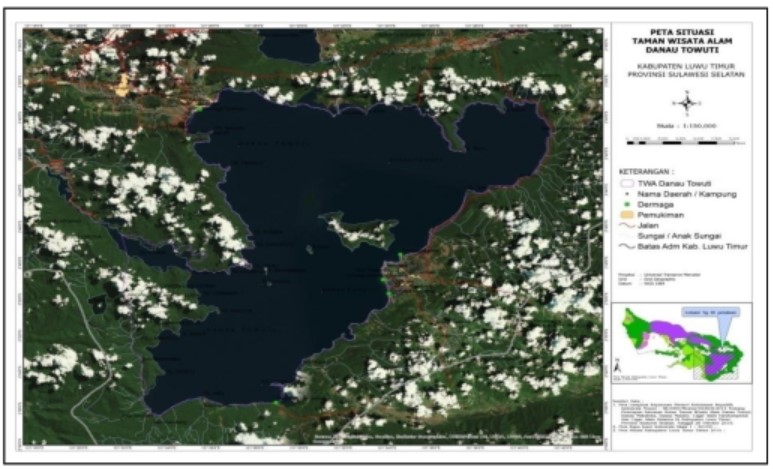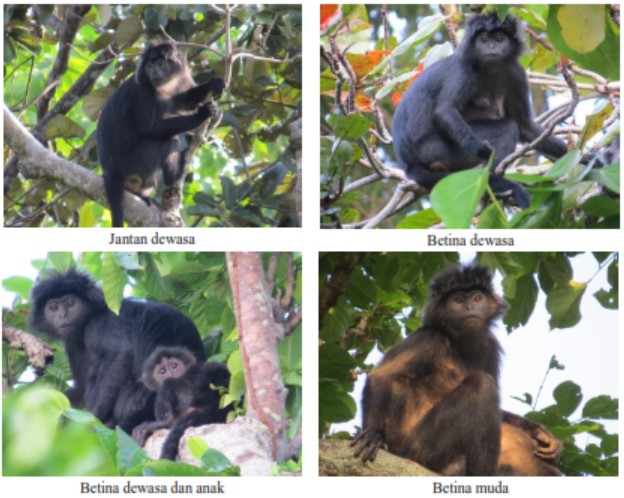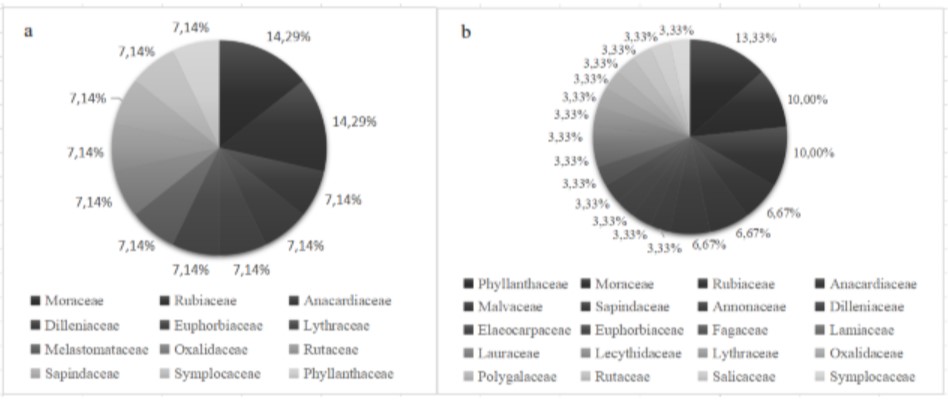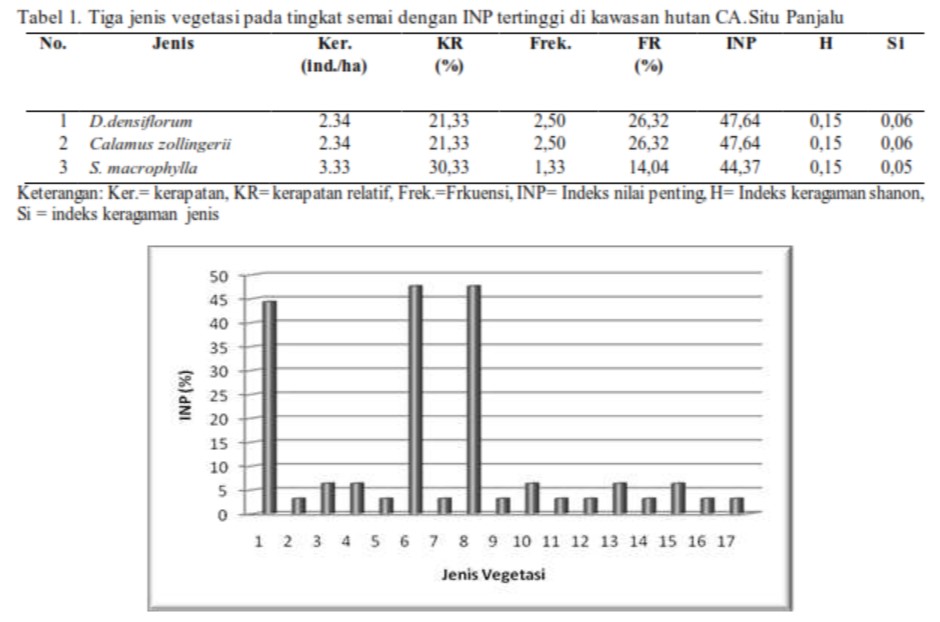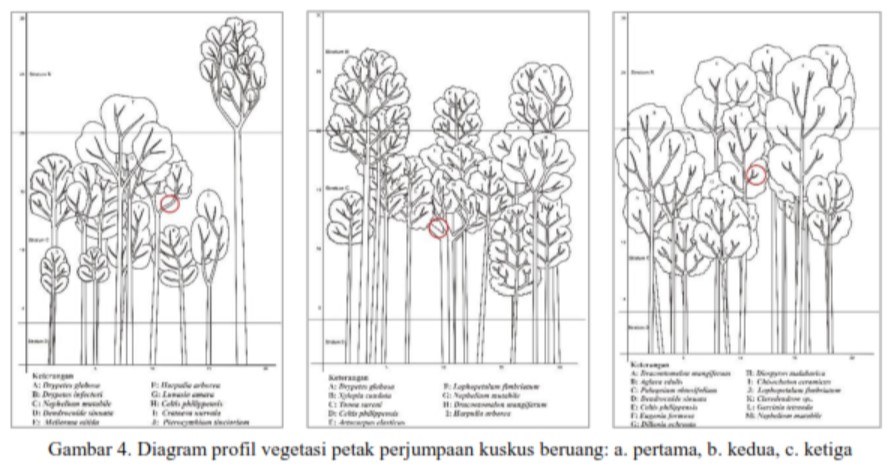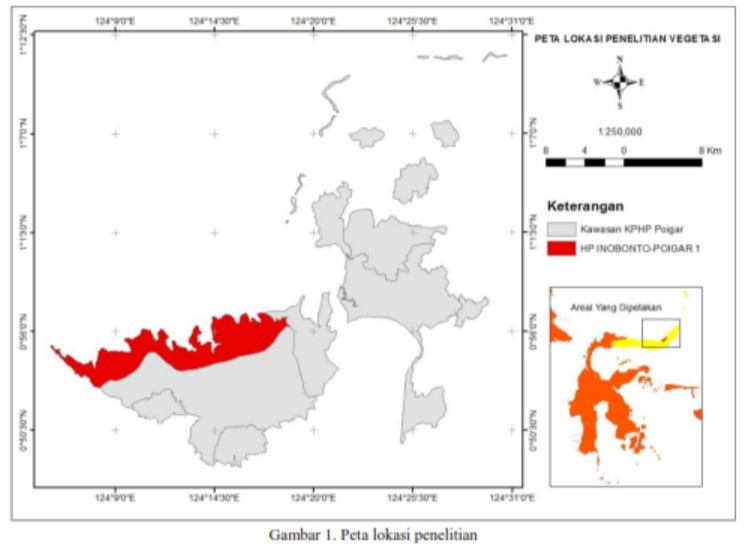Vegetation Characteristics of The Maleo Bird (Macrochepalon maleo) Habitat at Natural Tourism Park of Towuti Lake, South Sulawesi
Abstract
Maleo birds (Macrocephalon maleo) generally have habitats in forests near hot springs, but in East Luwu Regency their habitat is found on the shores of Lake Towuti. It is suspected that the habitat of maleo birds at the site has different characteristics. This study aims to identify the vegetation characteristics of maleo bird habitat in the sleeping area and tread where to lay eggs. Vegetation analysis was carried out by purposive sampling with a plot size of 20 m x 20 m in the sleeping area, and 5 m x 5 m in the laying site where the egg-laying was located. The data collected are the name of the type, diameter, the individual number of trees, poles, stakes, and seedlings. The results showed that in sleeping areas, macadamia hildebrandii trees have the highest INP values. Macadamia hildebrandii fruit is thought to be one of [1]the feeds for Maleo birds. In egg-laying habitats, Imperata cylindrica has the highest INP compared to other types. On the tread of the egg-laying nests can be seen maleo birds eating grass grains. There are differences in ecological index [2]values found in sleeping habitats, namely H'= 2.24 (medium), Dmg= 3.02 (low), and E= 0.81 (high). However, in egg-laying habitats, the Ecological Index values found were H'= 0.62 (low), Dmg= 0.93 (low) and E= 0.30 (low). The discovery of maleo birds in Lake Towuti TWA makes the area one of the remaining in situ habitats in South Sulawesi and can be a consideration for the government to maintain and preserve it.
##submission.copyrightStatement##
##submission.license.cc.by-nc4.footer##Copyright and License
All articles published in Wasian Journal are the property of the authors. By submitting an article to Wasian Journal, authors agree to the following terms:
-
Copyright Ownership: The author(s) retain copyright and full publishing rights without restrictions. Authors grant the journal the right to publish the work first and to distribute it as open access under a Creative Commons Attribution 4.0 International License (CC BY 4.0).
-
Licensing: Articles published in Wasian Journal are licensed under a Creative Commons Attribution 4.0 International License (CC BY 4.0). This license allows others to share, copy, and redistribute the material in any medium or format, and adapt, remix, transform, and build upon the material for any purpose, even commercially, provided that proper credit is given to the original author(s) and the source of the material

This work is licensed under a Creative Commons Attribution 4.0 International License. -
Author's Rights: Authors are permitted and encouraged to post their work online (e.g., in institutional repositories or on their website) prior to and during the submission process, as it can lead to productive exchanges and greater citation of published work.
-
Third-Party Content: If your article contains material (e.g., images, tables, or figures) for which you do not hold copyright, you must obtain permission from the copyright holder to use the material in your article. This permission must include the right for you to grant the journal the rights described above.
-
Reprints and Distribution: Authors have the right to distribute the final published version of their work (e.g., post it to an institutional repository or publish it in a book), provided that the original publication in Wasian Journal is acknowledged.
For the reader you are free to:
- Share — copy and redistribute the material in any medium or format for any purpose, even commercially.
- Adapt — remix, transform, and build upon the material for any purpose, even commercially.
- The licensor cannot revoke these freedoms as long as you follow the license terms.
Under the following terms:
- Attribution — You must give appropriate credit , provide a link to the license, and indicate if changes were made . You may do so in any reasonable manner, but not in any way that suggests the licensor endorses you or your use.
- No additional restrictions — You may not apply legal terms or technological measures that legally restrict others from doing anything the license permits.
Notices:
You do not have to comply with the license for elements of the material in the public domain or where your use is permitted by an applicable exception or limitation .
No warranties are given. The license may not give you all of the permissions necessary for your intended use. For example, other rights such as publicity, privacy, or moral rightsmay limit how you use the material.

